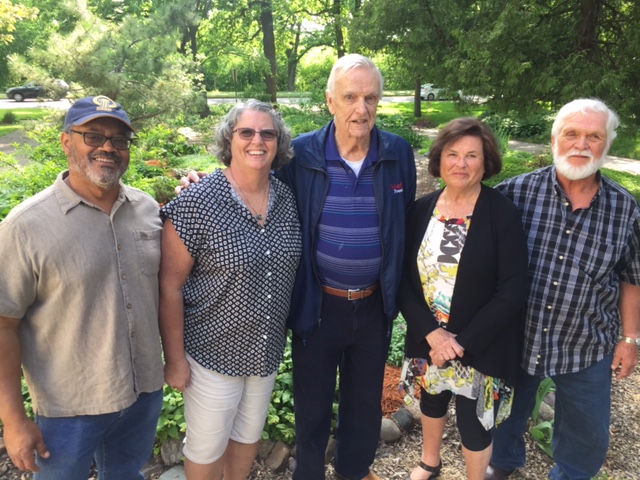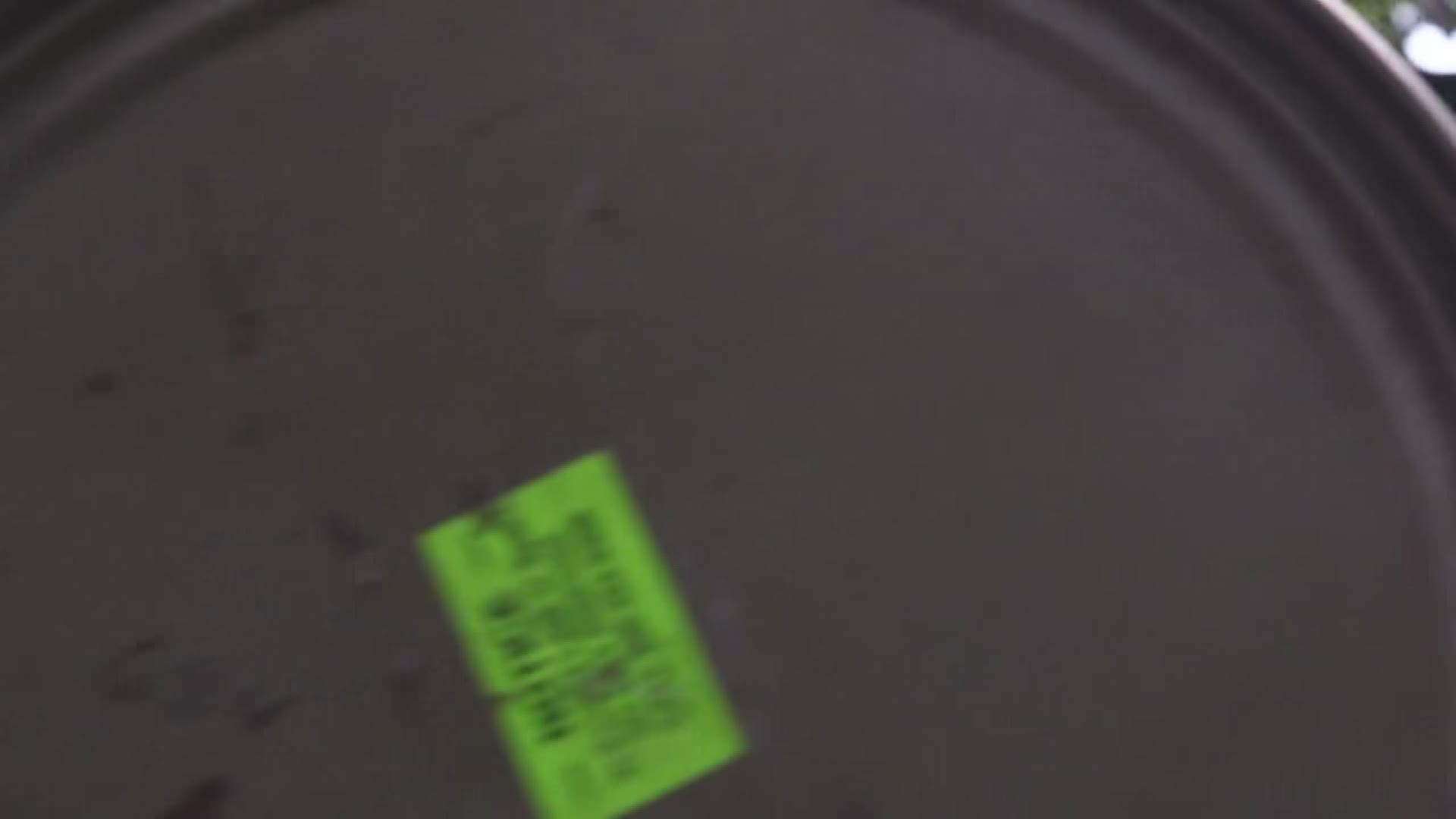It's taken 72 years, but the Japanese Fu-Go balloon that landed in Dorr, Mich., in 1945, has returned to West Michigan and will soon be on public display at the Byron Township Museum.
Theresa Kiel, who is one of the curators at the museum, traveled Thursday to Minneapolis to get the balloon.
"I can't believe this is happening," said Kiel, soon after she arrived in Minneapolis. "That balloon landed on my grandfather's property in 1945, so I have a personal connection to this."
Kiel and her husband, Keith; along with two friends, Terry and Diane Jones, left Byron Center at 6 a.m. Thursday, knowing they were embarking on a journey that would bring an extremely rare World War II artifact back near the location is was found in 1945.

The Dorr balloon ended up in the possession of a man named Don Piccard, who served as a balloon and airship rigger in the Navy during World War II. He was put in charge of all the Fu-Go balloons that were recovered. When the war was over, he was asked to destroy all the Fu-Go balloons, but was given permission to keep one.
The one he kept happened to be the one that landed in Dorr.
Piccard is a descendant from a family of balloonists. While he was a student at the University of Minnesota, he became one of the driving forces behind the revival of hot air ballooning in the United States.
In 1947, he used the Dorr Fu-Go balloon to perform his first solo flight over downtown Minneapolis. In the seven decades since, the balloon has primarily been in storage -- stuffed inside a drum inside his garage.
Piccard, 91, wasn't sure what would eventually happen to the balloon. In recent years, he says he's received mild interest from a balloon museum in New Mexico, but that never materialized.
In February, he took a phone call from Kiel, and the three month odyssey to bring the balloon back to Dorr began.
"It has to go somewhere," Piccard said. "It can't go with me [after i die]."
Soon after Kiel and her group arrived at Piccard's home, they went inside his garage and wheeled the balloon out into the yard.
"If this balloon could talk, it would really tell quite a story," said Kiel, soon after she laid eyes on the balloon and began inspecting it. "I'm overwhelmed and excited that we're here to being this home."
The story of the balloon's landing in Dorr has long been a topic of conversation and a significant piece of West Michigan history. On Feb. 23, 1945, three pre-teen boys were playing outside near north Dorr. Brothers Bob and Ken Fein, along with their best friend, Larry "Buzz" Bailey, looked up in the sky and saw what appeared to be a giant jellyfish floating overhead. The boys kept watching it as it descended at a rapid rate, then disappeared over the hilly terrain.
The boys knew whatever it was, it had landed not too far from where they were. They went looking for it, and eventually saw it flapping in the wind, laying on some farmland, just off 21st Street.
The Fein brothers and Bailey managed to get the balloon back to the Fein farm and stored it in the basement of the house. Kent County Sheriff deputies were called out to check it out, but they had no idea what it was.
Less than 24 hours later, members of the Federal Government showed up at the Fein farm, went into the basement, confiscated the balloon, and told the family to never mention anything about having seen it.
World War II ended six months later, but it took 15 years for information about the Japanese Fu-Go balloon bomb attack to become declassified. That's how long it took for the boys (who had since become grown men in their late 20s) to find out the truth about what they had discovered that day.
WZZM produced and aired a story in February 2017 entitled, "When the War Came to Dorr." The piece documented the history of the Japanese balloon bomb campaign, and also detailed the incident that occurred in Dorr. During research for the piece, it was discovered that the Dorr balloon still existed and was in the possession of Piccard.
"I watched the WZZM story and couldn't believe what I saw at the end," Kiel said. "The second I learned that balloon still existed, I knew I needed to figure out a way to get it to the Byron Township Museum to be displayed."
Kiel called an emergency meeting with the Byron Center Historical Society two days after the WZZM story aired. It was unanimous amongst the members that they wanted to get the balloon but were concerned the cost to bring it back was too steep.
"Don Piccard told me he'd sell us the balloon for $10,000," Kiel said. "I knew immediately that if this was ever going to happen, a donor would likely have to come forward with the funds."
Board members tried for more than two months to secure a donor but none came forward until Friday, May 19, when an anonymous donor sent Kiel an email saying they'd cover the cost of the balloon.
"I was so excited, and called Don Piccard right away," Kiel said. "He told me he'd honor his promise sell us the balloon."
Kiel says a special exhibit at the Byron Township Museum will be created, focusing exclusively on the balloon. She says the exhibit will be ready for the public to check out sometime in early 2018.
If you have an idea for an "Our Michigan Life" feature story, you can contact Brent Ashcroft: brentashcroft@wzzm13.com. Follow Brent on Twitter: @brentashcroft.
►Make it easy to keep up to date with more stories like this. Download the WZZM 13 app now.
Have a news tip? Email news@wzzm13.com, visit our Facebook page or Twitter.

